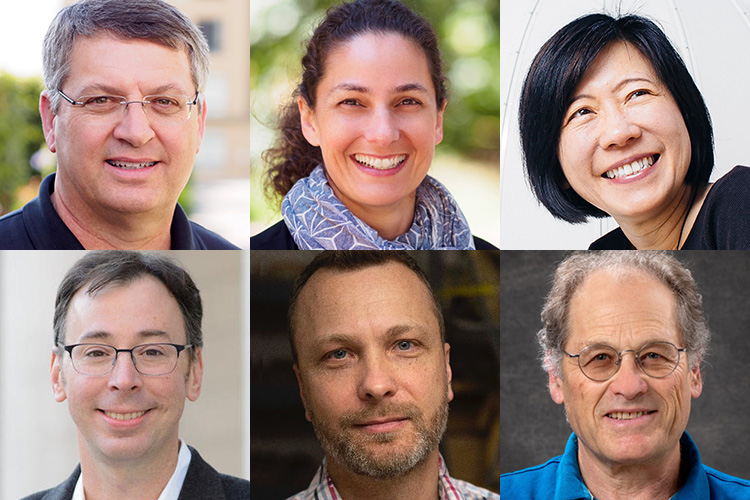Six Berkeley faculty members elected to National Academy of Sciences
With the election of these new members, the number of NAS members on the UC Berkeley faculty has risen to 151

May 3, 2022
Six UC Berkeley’s faculty members were elected today to the National Academy of Sciences in recognition of their distinguished and continuing achievements in original research.
The six were among 120 members and 30 international members elected at the conclusion of the academy’s 159th annual meeting. Membership is a widely accepted mark of excellence in science and is considered one of the highest honors that a scientist can receive.
There are now 151 Berkeley faculty members in the academy.
The newly elected members are:
David Drubin, the Ernette Comby Chair in Microbiology in the Department of Molecular and Cell Biology. His research aims to elucidate the molecular mechanisms that underlie cellular morphogenesis and plasma membrane dynamics in mammalian cells and in budding yeast.
Nicole King, professor of molecular and cell biology and a Howard Hughes Medical Institute investigator. She studies choanoflagellates to understand the genetic and developmental foundations behind the rise of multicellularity in animals.
Chung-Pei Ma, the Judy Chandler Webb Professor in Physical Sciences in the departments of astronomy and physics. A cosmologist and physicist, Ma studies the properties of dark matter and dark energy, the cosmic microwave background, gravitational lensing, galaxy formation and evolution, supermassive black holes, and the large-scale structure of the universe.
Joel Moore, professor of physics and faculty senior scientist at Lawrence Berkeley National Laboratory. A condensed matter theorist, Moore applies the rules of quantum mechanics to systems of many interacting particles to understand such phenomena as topological phases, spin and heat transport.
Rasmus Nielsen, professor of integrative biology and of statistics. His laboratory works on the development and application of statistical and computational methods for analyzing genomic data in the context of evolutionary genetics, population genetics and medical genetics.
Joseph Orenstein, professor of physics and faculty senior scientist at Berkeley Lab. He and his lab colleagues use light to probe condensed matter systems — in particular, high-temperature superconductors.
With today’s election, the NAS has a total of 2,512 active members and 517 international members.